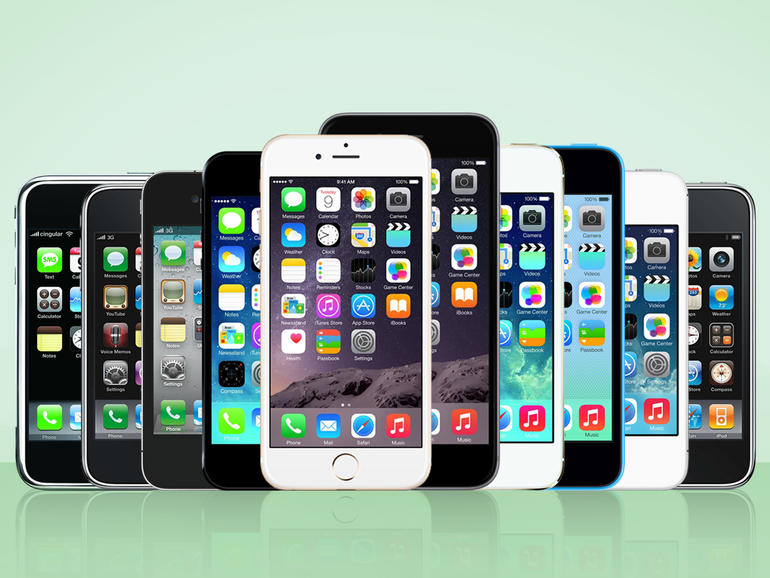It only seems like it was yesterday where Steve Jobs unveiled what looked like a larger version of an iPod but with touch controls. He went on to state that “Apple is going to reinvent the phone” and now here we are 10 years later, and his statement still holds the same weight. The iPhone managed to revolutionize the perception of how we view a smartphone today. As we now approach a decade to the day of that historic launch, it is necessary to reflect on the overall success of the iPhone and what made each of its products special. Here’s a rundown of all that went down with the iPhone!
iPhone 2G
On the 28th of June 2007, Apple launched the first ever iPhone. It garnered much attention and hype-which it had every right to have. What made it stand out is the inception of multiple sensors which added to its experience. What seems trivial now was at that time truly remarkable. Although it had it flaws such as a lack of GPS or SD card support, it managed to completely alter the status quo as it sold over 6 million units in the first year.
iPhone 3G and 3GS
A year later from the overwhelming success of the iPhone, Apple looked toward amending the flaws of the original model and hence launched the iPhone 3G. It offered an added 3G support, it made users aware of the potential of the iPhone brand and what it had to offer. The following year, Apple introduced the tradition of the ‘S’ upgrade of the iPhone. As they launched the iPhone 3GS, they released the feature of video recording for the first time alongside major improvements in internal parts. However, there was nothing that was truly revolutionary in these two sets of models.
Read:
iPhone 4 and 4S
The iPhone 4 was major step up from Apple in comparison to the jump to the 3G and 3GS. It featured a sleeker design and improved design as the pixel count increased with the newly introduced Retina display. It was the first iPhone, which featured a front camera alongside multi-tasking capabilities. Apple truly did offer a large improvement. The following year, the iPhone 4S offered a minor upgrade to the iPhone 4. However, it did introduce Siri, which undoubtedly to this day plays a major rule in the daily life of an iPhone user.
iPhone 5, 5S and 5C
Perhaps the biggest upgrade that Apple has ever had was the jump from the 4S to the iPhone 5. It mildly changed the general display of the iPhone screen with adding more icons and an impeccably large screen (for that time). Alongside that, it offered a new aluminum casing and the new lightning connector. The following year, Apple not only introduced one new mode, but two. With the newly packaged ‘C’ product of the iPhone, Apple offered a cheaper alternative to the iPhone. Although it was understandably not as popular as its predecessors, it also introduced the widely popular iOS 7 as well. However, the flagship model of that year was the iPhone 5S. It offered a sleeker design and interface, which is still adapted today alongside the first ever, Touch ID and a new 64-bit processor.
iPhone 6, 6 Plus and 6S
As we now move on to a phase where Apple has been defined as the premier brand for smartphones and waiting for the new Apple product has become an annual tradition, the iPhone 6 promised with another impressive design. With a larger screen and more pixels, it proved to be one of the highest selling iPhones yet. Also, Apple gave in to the trend of larger screens and launched the 6+. It boasted an impressive 5.5 inch screen while still maintaining the intricacy which makes Apple products stand out. Following that, when the 6S was released, it offered a completely different experience in terms of the touch experience it offers alongside an upgraded UI.
iPhone SE
The iPhone SE was an interesting specimen to say the least. With the design of an iPhone 5, and Apple’s bold step of launching a smaller phone while the entire industry was focusing on larger and larger phones. It offered a much lower price tag and showcased a true value for money. However, this phone came under the shadow of the iPhone 7.
iPhone 7 and 7 Plus
What caught the whole industry off guard is the exclusion of the headphone jack and a massive camera bump than before due to the success of the two lenses it has to offer. It adds a new look to the conventional iPhone design and makes it unique to other devices. For starters, the base storage memory for this line is 32gb, new and improved home button and passcode settings, HD retina display, and of course… water and dust resistant!
The iPhone 7 Plus boasts of a ‘Portrait Mode’, producing excellent DSLR-like results, and has been the best upgrade to the iPhone cameras yet.
As we approach 10 years to the birth of the iPhone, Apple is hosting its first ever event at the Steve Jobs Theater, where the company is expected to reveal the next iPhone, with updates to follow on the iOS software, Apple Watch and Apple TV.
iPhone 8 or X? Or Both?
What may seem like the launch of the iPhone 8, it has sent the online community into frenzy as speculations run wild on what the products might be.
Apple once stated that ‘iPhone is a revolutionary and magical product that is literally five years ahead of any other mobile phone. We are all born with the ultimate pointing device—our fingers—and iPhone uses them to create the most revolutionary user interface since the mouse’.
It’s fascinating that a statement once said 10 years ago still holds relevance and still is true today. Irrespective of the polarized opinions some may have for the iPhone, there’s no denying that the introduction of the iPhone played a vital role in making all smartphones and electronics what they are today; not only leading to the creation of the iPad, but also the Apple TV, Smartwatch, Air pods etc.
Apple has always set the bar for revolutionary products and we hope that this much-anticipated announcement today will stand by Apple’s commitment to innovation.
Image source: Stuff TV








